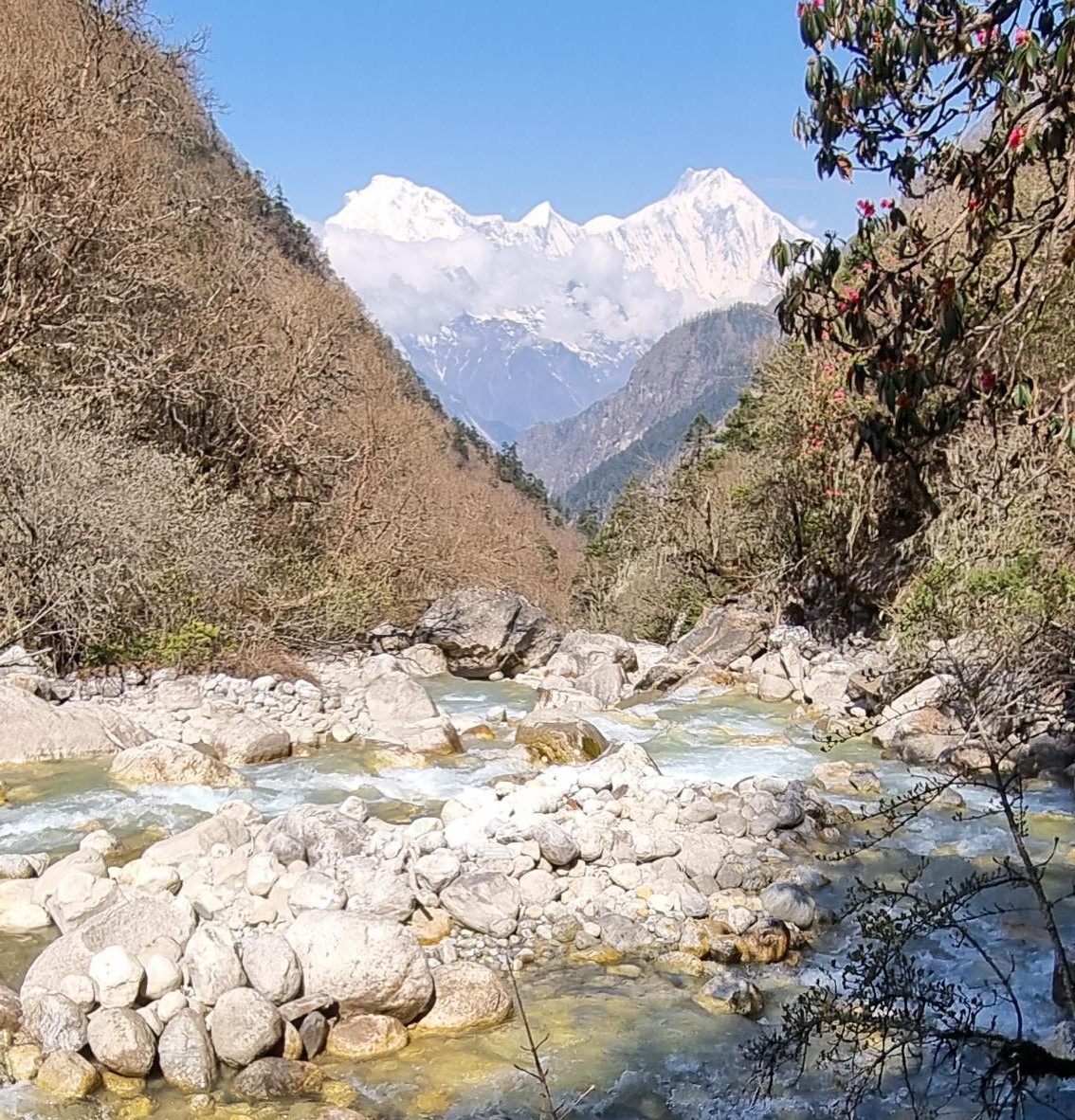Himalayan glacier retreat: impacts on river ecosystems

Project background
Glaciers cover ~10% of Earth’s surface, but they are losing mass at unprecedented rates worldwide and are expected to disappear in many places by the end of the century. Glacier retreat is already causing major changes in downstream aquatic systems such as increasing water temperatures, reduced flows and altered sediment fluxes (Milner et al., 2017). These changes are driving habitat fragmentation and species redistributions, population extinction threats for fragile cold-adapted species and modifying the ecosystem services that society depends upon. Yet, major gaps still remain in our understanding of how aquatic biodiversity responds to glacier loss (IPCC, 2019): in the Himalayas for example – one of the world’s major biodiversity hotspots – we know very little about which species live in glacier-fed rivers or how they are responding to climate change (Fair et al., 2021; Ezzat et al., 2022).
Cold, turbulent, sediment-laden glacier-fed rivers were historically seen as inhospitable to life but they are now known to host diverse communities of specialised cold-adapted fungi, bacteria, algae and invertebrates that interact in complex food webs. Recently we have demonstrated that, for aquatic invertebrates at least, the processes shaping biodiversity in glacier-fed rivers may be globally consistent after we account for systematic regional effects of latitude (Brown et al., 2018). However, a critical gap in this analysis was Himalayan rivers due to the lack of available datasets. Here, river conditions differ from other mountain zones due to annual monsoon rainfall events and flooding, plus pronounced oxygen limitations at high-altitude.
Directed studies in the Himalayas are needed therefore to understand how these ecosystems can be expected to respond to future changes in both glacier runoff and monsoon rainfall changes. In general, most previous glacier river studies have focused on invertebrates with far less understanding of extremely biodiverse groups such as bacteria, fungi and algae (Fell et al., 2017). As a consequence, the roles of these biological groups in mountain biogeochemical cycles, water quality maintenance, and aquatic and riparian food webs are still to be determined.
Project aims
Working with partners from Kathmandu University, this project will focus on river systems in the central/eastern Himalayas, specifically the Annapurna Conservation Area, Langtang National Park and Sagarmatha (Everest) National Park regions of Nepal. New field surveys will be developed as part of the PhD to study aquatic biodiversity along space-for-time gradients of glacier retreat, whilst also re-sampling a limited number of sites from previous studies to observe temporal changes directly.
A key focus will be on benthic invertebrates but there are also likely to be opportunities to assess algal and microbial (bacteria/fungi) communities. The successful candidate will also receive training the use of dataloggers and water sampling/analysis to monitor river physical and chemical properties, and the use of satellite imagery and GIS software to track changes in glacier extent. The project offers excellent opportunities for travel, for fieldwork, laboratory placements in Nepal and to present findings at international scientific meetings.
References
Brown et al. 2018. Nature Ecology & Evolution 2, 325-333
Ezzat et al. 2022. Applied and Environmental Microbiology 88, e00421-00422
Fair et al. 2021. Freshwater Biology 66, 1282-1295
Fell et al. 2017. BioScience 67: 897–911
IPCC. 2019. Special Report on the Ocean and Cryosphere in a Changing Climate
Milner et al. 2017. Proceedings of the National Academy of Sciences 114, 9770-9778
